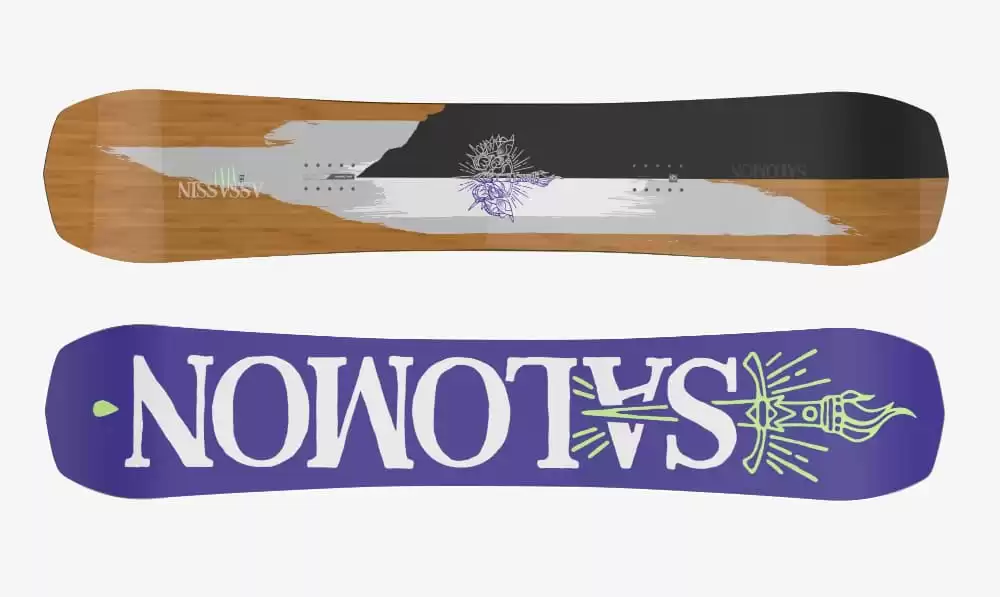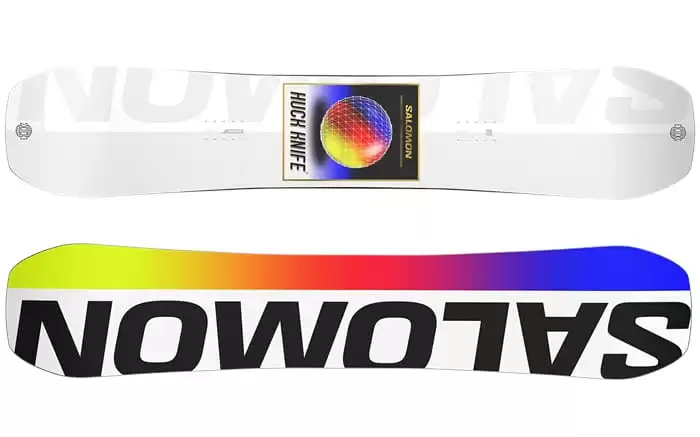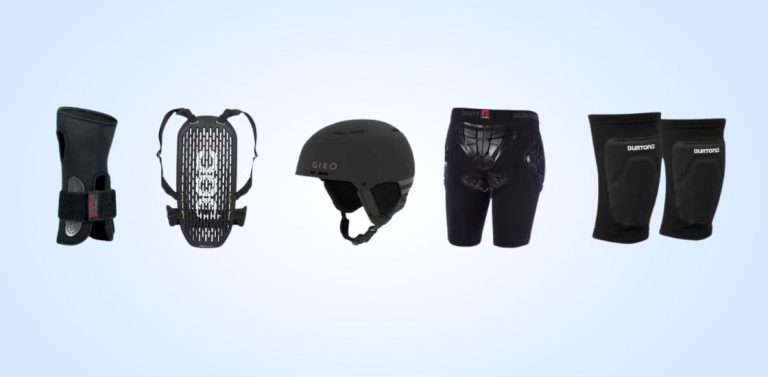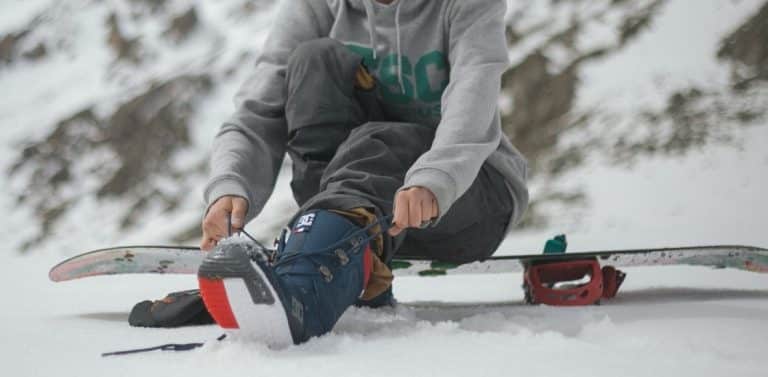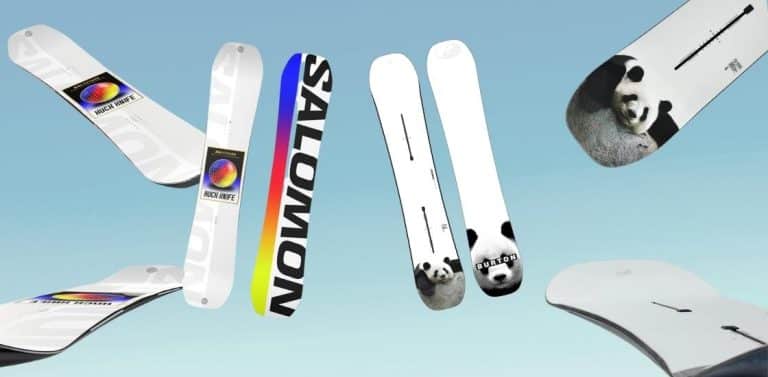The Salomon Huck Knife and the Assassin are two of Salomon’s most popular freestyle boards. So what makes them so popular? and what kind of riding are they each most suited to?
Although there are many similarities between the two boards, there are also some key differences that make them suited for different styles of riding.
Directional-twin, all-mountain freestyle board
True-twin, freestyle/park board
| Salomon Assassin | Salomon Huck Knife | |
|---|---|---|
| Camber | Rock out Camber | Quad Camber |
| Shape | Directional Twin | True Twin |
| Flex | 5/10 | 4/10 |
| All-Mountain | ||
| Park | ||
| Powder |
Comparing Shape
As you would expect for a freestyle board, both boards have a twin shape. This means the boards are both symmetrical in the tip and tail.
The Huck Knife is a True-twin, meaning both the shape and the binding mounting points are symmetrical at both ends of the board.
The Assassin is a Directional Twin, this means it has a true-twin shape but the stance is a little setback towards the tails giving a longer nose.
However, with a little tweak to the placement of the bindings you can have either board setup as a true twin or a directional twin. So far not much difference between the two…
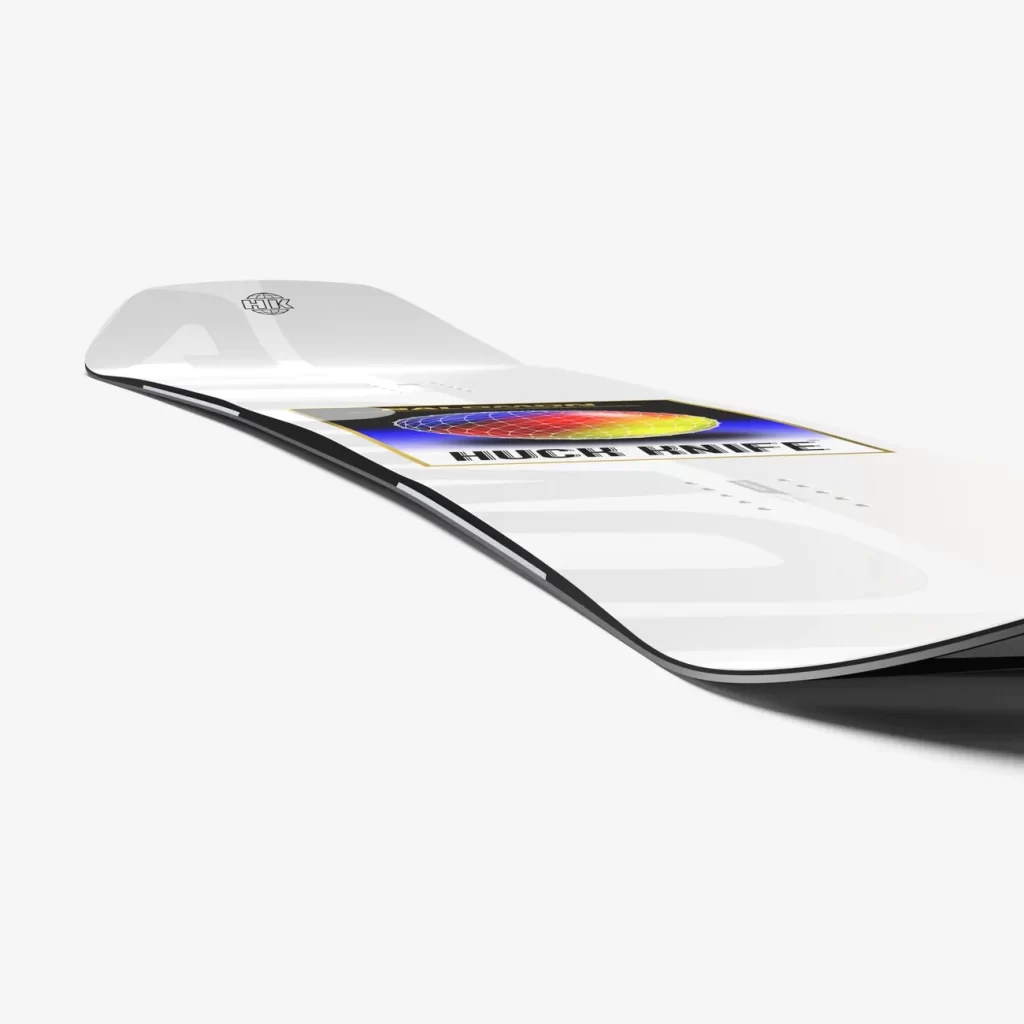
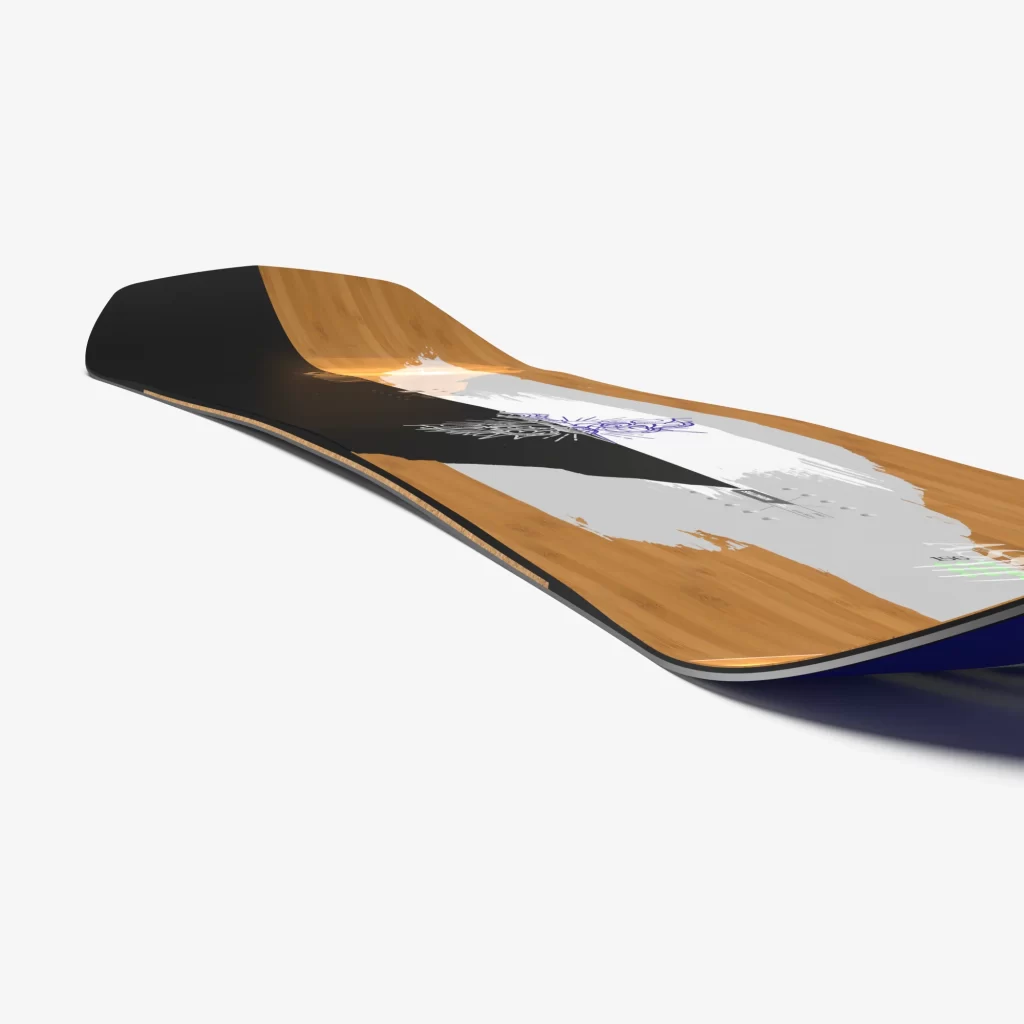
Comparing Camber
Looking at the camber we can start to see some differences between the two boards. Although both boards are based on a traditional camber profile there is some variation on how they bend.
The Huck Knife has Salomon’s Quad-Camber profile, which incorporates 5 different camber sections along the board’s length. Between the feet there is a mellow, almost flat camber section which gives the board a mellow, forgiving feel. Then under the bindings, there is a tighter camber section to give more power where and when you need it, popping ollies or springing out of a turn. Then towards the tip and tail, there are early rocker sections, which lift the contact point of the edge clear of the snow. This helps in turn initiation and to let you get away with less-than-perfect landings without catching an edge.

The Assassin has Salomon’s Rock Out Camber profile, which incorporates 3 different sections: Camber in the center of the board then early rocker towards the tip and tail. The rocker kicks in a little earlier than on the Huck Knife which gives the board a little more float in powder and in slushy conditions.

Setting both boards on the ground, the gap between the center of the board and the ground is bigger on the Huck Knife than on the Assassin. This translates to more pop and precision on the Huck Knife but more float on the Assassin.
Comparing Flex
Both boards have are rated by Salomon as having a medium flex. I found both boards to be a little on the soft side compared boards from other brands that aim to do the same job. They also both have a twin flex, meaning the tail has the same stiffness as the nose.
Despite having the same flex, they do feel different due to the different camber profiles.
So on paper they have the same flex and should feel the same. However, I could really feel the difference between the two boards when ollieing and pressing the nose and tail. I put this down to the difference in camber profiles
The Huck Knife features rubber inserts that sit between the edges of the board and the core. Salomon claim this acts as a dampening system to give a smoother ride…not something that I have noticed, but it might help protect your edges when riding rails and boxes.
Comparing Sidecut
The other major area of difference is the sidecut of the two boards. The Huck Knife has Salomon’s Equalizer Sidecut. Rather than one continuous curve, the Huck Knife has a blend of 3 sections with straight edges. The thinking behind this is that the straight lines will cut deeper into the snow when the board is put on edge so you should be able to get better edge hold with less effort.
The Assasssin’s Quadrilizer sidecut also has 3 different sections but these are made up of curves of different radius’s, with a tighter radius at the front and back of the board and a more mellow redius between the feet.
The difference between these two approaches gives the Assassin a more high performance carve feel and makes the Huck Knife easier to set on edge for spinning off a jump but less performance in a turn.
Comparing Construction
The Huck Knife and the Assassin have very similar core constructions. On either side of the core is a matrix of glass laid in three directions, +/- 45 degrees and another running length-ways. This gives a predictable flex along its length with plenty of pop.
They are reinforced with stingers which fan out at the tip and tail. On the Huck Knife these stringers are carbon, whereas on the Assassin they are bamboo. The carbon stringers give the Huck Knife a little more snap and pop than the Assassin, which is better for ollies.
Underneath, both boards have a high-grade, WFO sintered base that runs super fast, holds wax well, and is tough enough to withstand a few rocks.
How the riding compares?
As we have discovered, there are a lot of similarities between the two boards. They have the same twin shape, with very similar constructions.
The main difference between the two boards are in their camber and sidecut profiles, lets see how this translates into the riding.
All Mountain
Both boards are great fun to cruise around the mountain on. The Huck Knife as loads of pop and is great for boosting ollies of rollers and side-hits. I definitely felt the Assassin held onto the turns better and was more suited to riding the whole mountain than the Huck Knife which I felt as just looking for the next opportunity to get into the air.
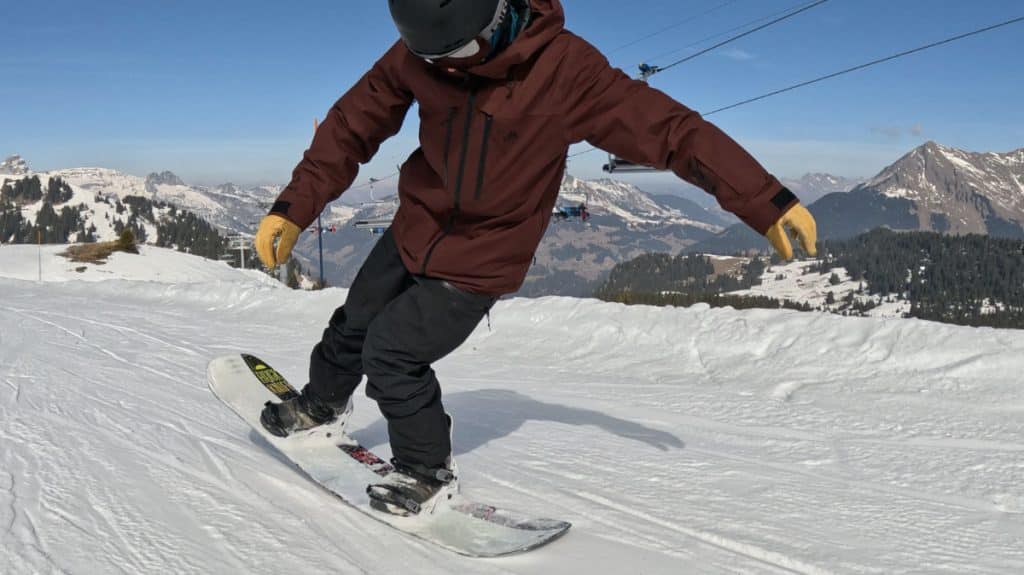
I rode these boards in spring conditions and the early rocker on the Assassin handled the slush better than the Huck Knife. Although we didn’t have any, I’m fairly sure you could say the same for powder as well.
With their medium floex, both boards are easy to ride but have enough life in them to keep most advanced riders happy. If you are looking for a more aggressive ride, then Salomon do a Huck Knife Pro and an Assassin Pro which are beefed up versions with a little more stiffness.
Park
The Huck Knife is Salomon’s premier park board, so this is an area that I expected it to really out perform the Assassin.
On rails and boxes, I would definitely opt for the Huck Knife, the Quad Camber really helps lock into presses and the almost flat section between the feet feels really solid in board slides.
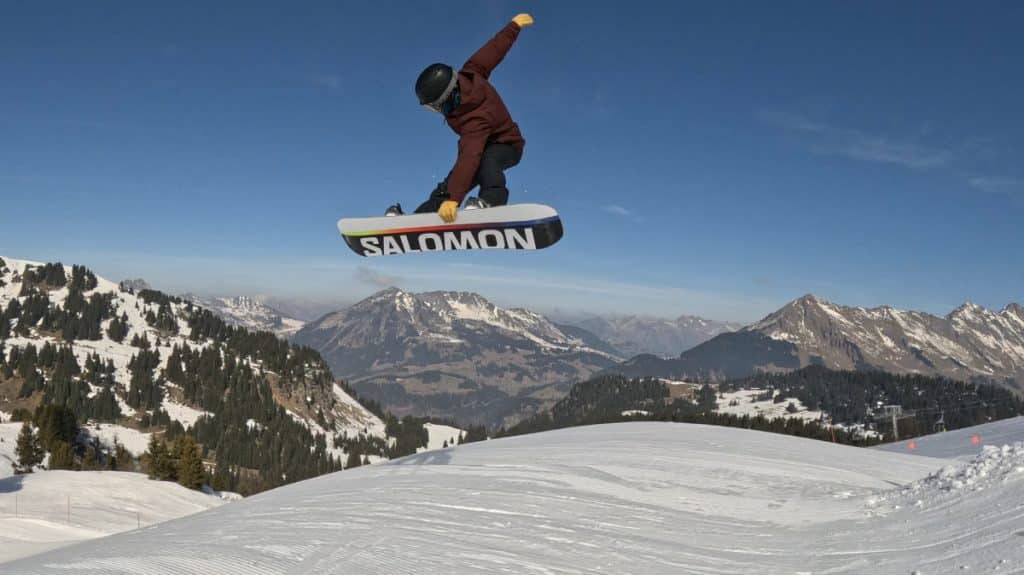
On the jumps I couldn’t feel too much difference between the boards. They both have good amounts of pop and felt solid on take-off and landing on all sizes of kicker.
I haven’t ridden many boards that manage to generate so much pop with relatively soft flex.
For buttering, the boards definitely feel different, but I would struggle to say which one is better! Its easy to get into a press on both these boards, but the Huck Knife has o more locked-in feel, and gives more pop off the nose or tail. Again, this is down to the Huck Knife’s quad camber profile.
The Assassin is also loads of fun to butter, in fact it probably has more of a ‘buttery’ feel. I always test a board out with a 360 spin on the nose and this felt really easy to spin on the Assassin although it was maybe a little harder to find the balance point on the rockered nose, and gave less pop on the way out.
Powder
Although neither of these boards were designed with powder in mind, they won’t hold you back from getting a few turns on a powder day! Twin camber boards do not have a lot of float in the nose, but both these boards have a little something extra in the camber profile that will help you out in the deep stuff.
The Huck Knife has early-rocker in both the tip and tail, which is just enough to lift the nose and reduce your chance of hooking the front of the board in the powder.
However, for deep powder the Assassin definitely will come out on top. With a standard binding setup it has a longer nose. This combined with extra rocker at the tip and tail definitely will give more float than on the Huck Knife.
Which one would I choose?
I found both boards to be loads of fun to ride in the park and jibbing around the mountain. I don’t ride too much park these days, so out of the two I would choose the more versatile Assassin
But if rode at an indoor slope or a small resort where I really was only interested in riding the park then I would have to go for the Huck Knife. I haven’t ridden many boards that manage to generate so much pop with relatively soft flex.
I think for rails and boxes and smaller jumps, I would choose the Huck Knife. For bigger jumps and more serious freestyle I would want the predictability of the process.
If you like the look of either of these boards but want something a little stiffer then check out the Huck Knife Pro, and the Assassin Pro that have some extra carbon, and will hold up better at high speeds
Directional-twin, all-mountain freestyle board
True-twin, freestyle/park board

